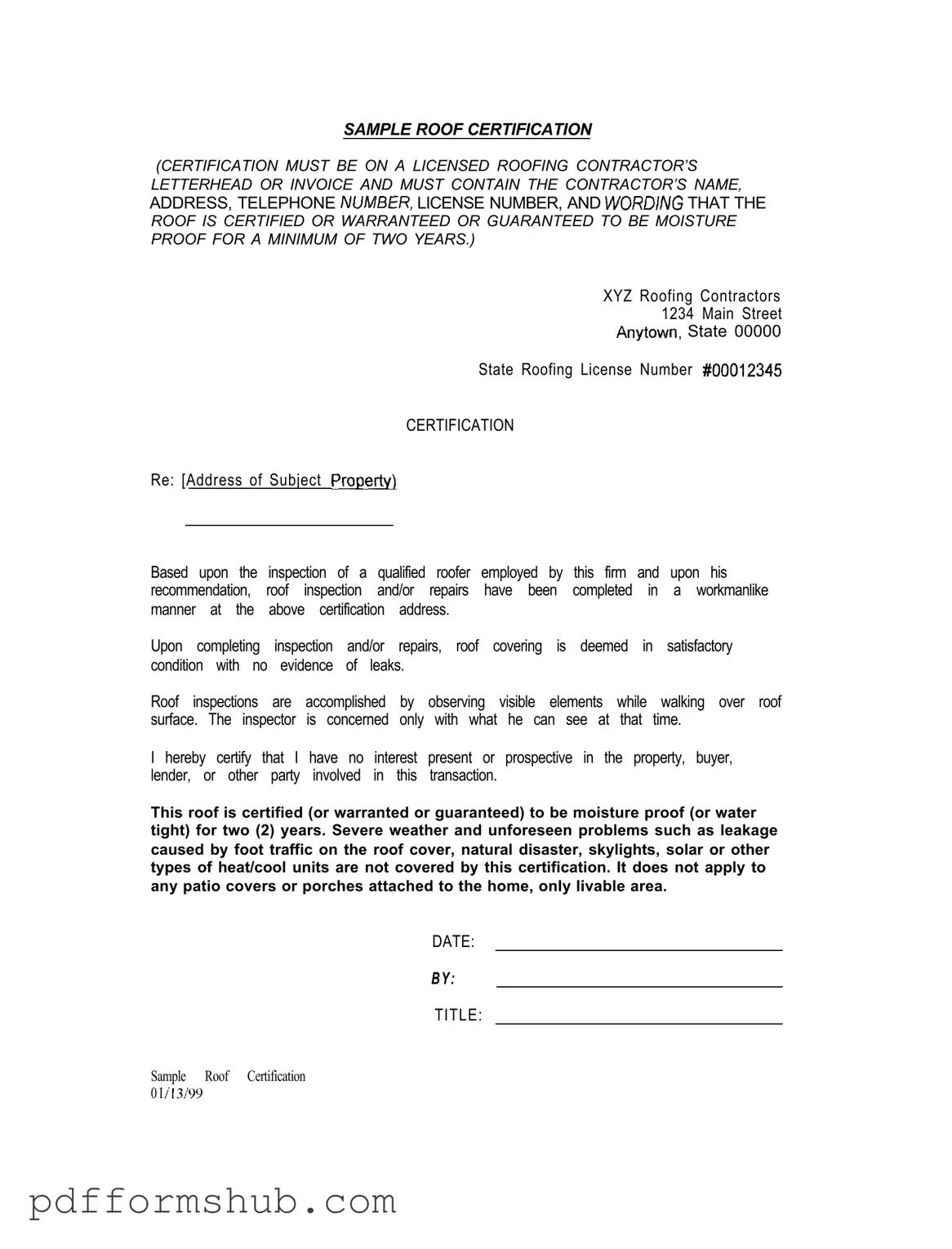Fill in Your Sample Roof Certification Form
The Sample Roof Certification form is a document that confirms a roof's condition and guarantees its moisture-proof status for at least two years. This certification must be issued on the letterhead of a licensed roofing contractor and include essential details such as the contractor's name, address, and license number. For peace of mind regarding your roof's integrity, consider filling out the form by clicking the button below.
Customize Form
